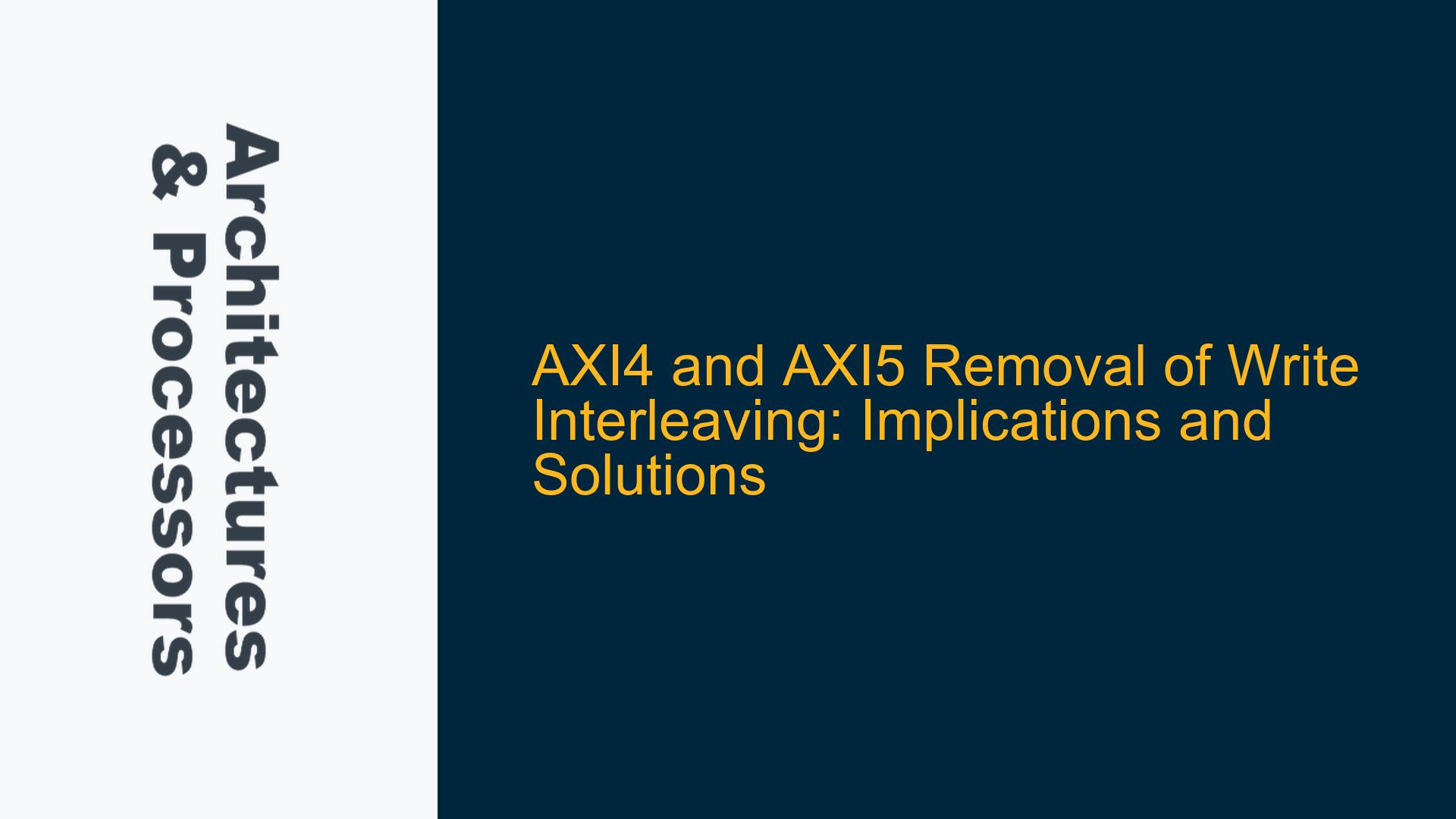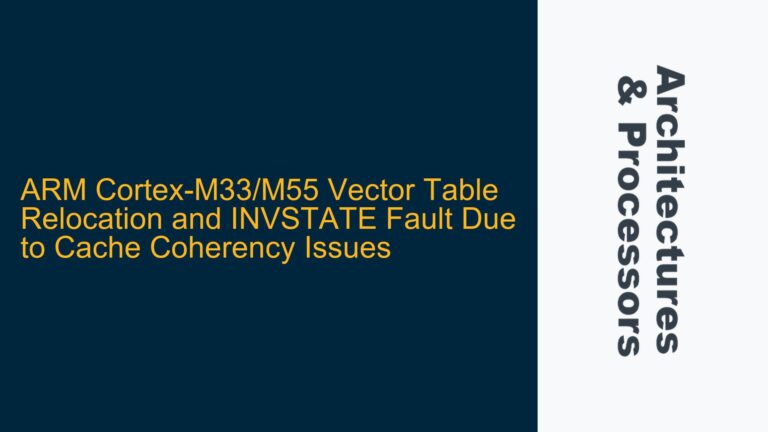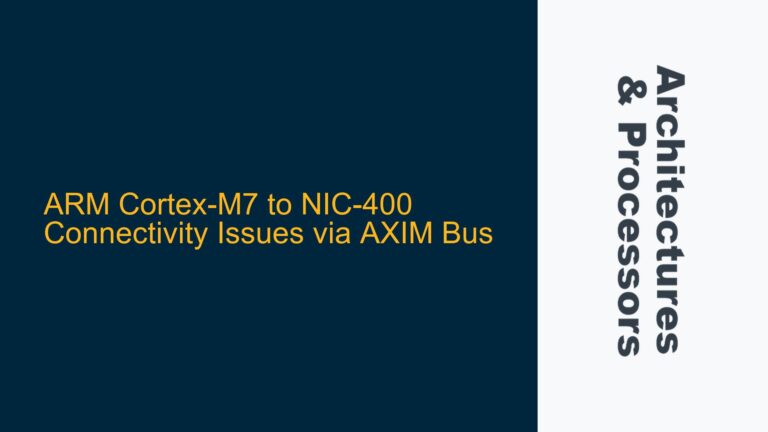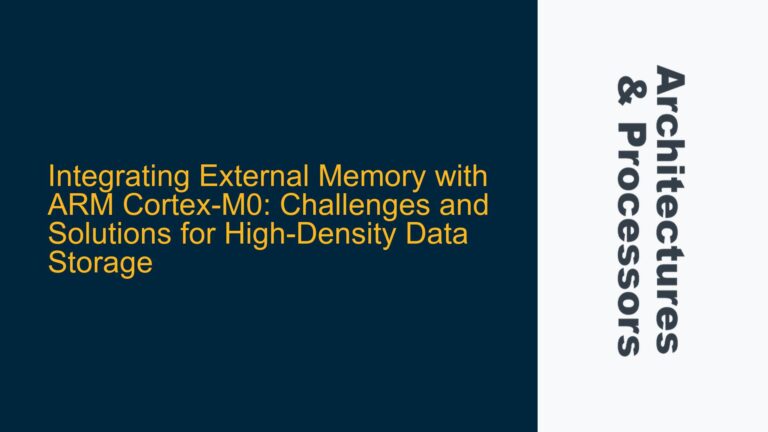AXI4 and AXI5 Write Interleaving Removal and Its Impact on SoC Design
The removal of write interleaving support in AXI4 and AXI5 has significant implications for System-on-Chip (SoC) design, particularly in the context of ARM-based architectures. Write interleaving, a feature present in AXI3, allowed for the interleaving of write data transactions with different transaction IDs (IDs) on the same data bus. This feature was designed to maximize bus bandwidth utilization by allowing multiple write transactions to share the same data bus, even if they originated from different masters or had different IDs. However, AXI4 and AXI5 removed this feature, leading to questions about its original purpose, the drawbacks it introduced, and the enhancements that followed its removal.
The primary reason for the removal of write interleaving in AXI4 and AXI5 was the complexity it introduced at the destination component. Supporting write interleaving required additional logic to store and reorder write data transfers based on their transaction IDs. This complexity was often deemed unnecessary, as most designs opted for simpler buffering solutions that achieved similar bandwidth utilization without the added overhead. Furthermore, the removal of write interleaving simplified the design of AXI interconnects and reduced the verification burden, as fewer corner cases needed to be considered.
Despite its removal, write interleaving had specific use cases in AXI3, particularly in systems where multiple masters frequently issued write transactions to the same slave. In such scenarios, interleaving allowed for more efficient use of the data bus, reducing idle cycles and improving overall system performance. However, the drawbacks of write interleaving, including increased complexity and potential for timing issues, outweighed its benefits in most practical implementations.
Complexity and Timing Issues in Write Interleaving Implementations
The complexity introduced by write interleaving in AXI3 stemmed from the need to manage multiple write data streams with different transaction IDs. Each write transaction required its data to be stored temporarily at the destination component until all data for that transaction was received. This necessitated the use of additional buffers and control logic to ensure that data from different transactions was correctly interleaved and reassembled at the destination.
One of the key challenges in implementing write interleaving was ensuring that the destination component could handle the reordering of write data without introducing timing issues. In high-performance systems, where multiple masters could issue write transactions simultaneously, the destination component had to manage potentially large amounts of interleaved data. This required careful design of the data storage and control logic to avoid bottlenecks and ensure that data could be processed in a timely manner.
Another issue with write interleaving was the potential for deadlock or livelock conditions in the interconnect. If the destination component became overwhelmed with interleaved data, it could stall the entire system, leading to performance degradation or even system failure. This was particularly problematic in systems with tight timing constraints, where even minor delays could have significant consequences.
The removal of write interleaving in AXI4 and AXI5 addressed these issues by simplifying the data path and reducing the complexity of the interconnect. By requiring that write data be buffered and issued in a single burst, AXI4 and AXI5 eliminated the need for complex reordering logic at the destination component. This not only reduced the risk of timing issues but also made the interconnect easier to design and verify.
Simplifying SoC Design with AXI4 and AXI5 Write Buffering
The removal of write interleaving in AXI4 and AXI5 led to the adoption of simpler buffering solutions that achieved similar bandwidth utilization without the added complexity. In these newer versions of the AXI protocol, write data is typically buffered at the source component before being issued to the interconnect. This approach allows the source component to accumulate a full burst of write data, which can then be transmitted in a single, compact transaction.
One of the key advantages of this approach is that it reduces the burden on the destination component. Since the write data is transmitted in a single burst, the destination component does not need to manage multiple interleaved data streams. This simplifies the design of the destination component and reduces the risk of timing issues. Additionally, by transmitting write data in a single burst, the interconnect can make more efficient use of the available bus bandwidth, as there are fewer gaps between transactions.
Another benefit of write buffering is that it simplifies the verification process. With write interleaving removed, there are fewer corner cases to consider, and the overall behavior of the system becomes more predictable. This makes it easier to develop comprehensive testbenches and ensure that the system meets its performance and timing requirements.
In systems where multiple masters frequently issue write transactions to the same slave, the use of write buffering can still achieve high bandwidth utilization. By buffering write data at the source component, the system can ensure that the data bus is used efficiently, even without the ability to interleave write transactions. This approach also allows for more flexible scheduling of write transactions, as the source component can prioritize certain transactions based on system requirements.
Enhancing System Performance with AXI4 and AXI5 Read Interleaving
While write interleaving was removed in AXI4 and AXI5, read interleaving remains supported. This allows the interconnect to interleave read data transactions with different transaction IDs, making more efficient use of the available bus bandwidth. Read interleaving is particularly useful in systems where multiple masters issue read transactions to the same slave, as it allows the interconnect to fill gaps in the data stream with data from other transactions.
One of the key advantages of read interleaving is that it does not require additional complexity at the destination component. Since the AXI manager already supports multiple data streams when using multiple IDs, the interconnect can interleave read data without the need for additional buffering or reordering logic. This makes read interleaving a more straightforward and efficient solution compared to write interleaving.
In systems with high read traffic, read interleaving can significantly improve performance by reducing idle cycles on the data bus. By interleaving read data from multiple transactions, the interconnect can ensure that the data bus is used as efficiently as possible, even in systems with tight timing constraints. This is particularly important in high-performance systems, where maximizing bus bandwidth utilization is critical to achieving the desired level of performance.
Addressing Potential Drawbacks of Read Interleaving
While read interleaving offers significant benefits, it is not without potential drawbacks. One of the key challenges in implementing read interleaving is ensuring that the AXI manager can handle the interleaved data streams without introducing timing issues. In systems with high read traffic, the AXI manager must be able to process multiple interleaved data streams simultaneously, which can require careful design and optimization.
Another potential issue with read interleaving is the risk of data starvation in certain transactions. If the interconnect prioritizes certain read transactions over others, it is possible for some transactions to experience delays in receiving their data. This can be particularly problematic in systems with real-time requirements, where delays in data delivery can have significant consequences.
To address these issues, designers must carefully consider the scheduling and prioritization of read transactions in the interconnect. By implementing fair and efficient scheduling algorithms, the interconnect can ensure that all read transactions receive their data in a timely manner, even in systems with high read traffic. Additionally, designers can use techniques such as data prefetching and caching to further improve the performance of read transactions and reduce the risk of data starvation.
Conclusion: Balancing Complexity and Performance in AXI4 and AXI5
The removal of write interleaving in AXI4 and AXI5 represents a significant shift in the design philosophy of the AXI protocol. By simplifying the data path and reducing the complexity of the interconnect, AXI4 and AXI5 have made it easier to design and verify high-performance SoCs. While write interleaving offered certain benefits in terms of bandwidth utilization, the drawbacks it introduced in terms of complexity and timing issues outweighed its advantages in most practical implementations.
The adoption of write buffering in AXI4 and AXI5 has provided a simpler and more efficient solution for managing write transactions. By buffering write data at the source component and transmitting it in a single burst, the system can achieve high bandwidth utilization without the need for complex reordering logic at the destination component. This approach not only simplifies the design of the interconnect but also reduces the risk of timing issues and makes the system easier to verify.
At the same time, the continued support for read interleaving in AXI4 and AXI5 ensures that the system can still achieve high bandwidth utilization in systems with high read traffic. By interleaving read data from multiple transactions, the interconnect can make more efficient use of the available bus bandwidth, even without the ability to interleave write transactions. However, designers must carefully consider the potential drawbacks of read interleaving, including the risk of data starvation and the need for efficient scheduling algorithms.
In conclusion, the removal of write interleaving in AXI4 and AXI5 represents a trade-off between complexity and performance. By simplifying the data path and reducing the complexity of the interconnect, AXI4 and AXI5 have made it easier to design and verify high-performance SoCs. At the same time, the continued support for read interleaving ensures that the system can still achieve high bandwidth utilization in systems with high read traffic. As SoC designs continue to evolve, the AXI protocol will likely continue to adapt to meet the changing needs of designers, balancing the need for simplicity and efficiency with the demand for high performance and flexibility.






